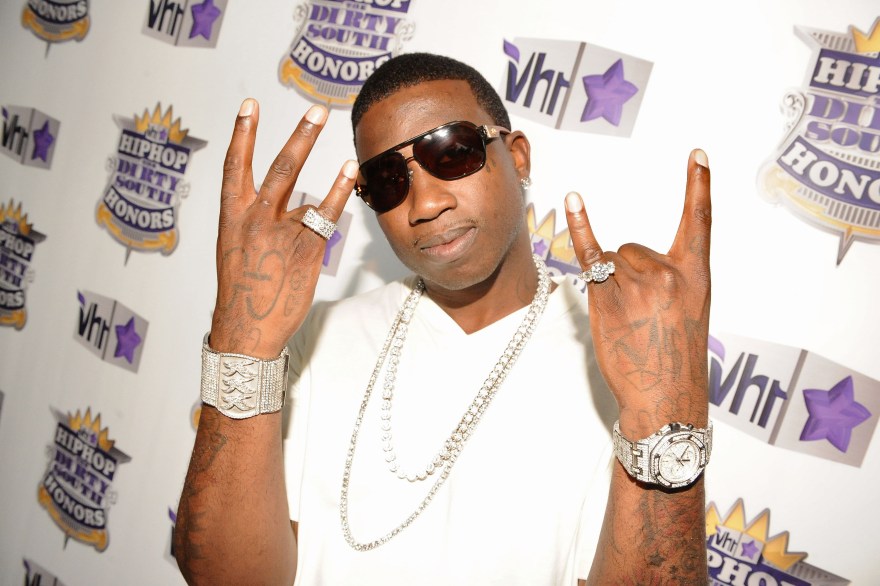Videos by According2HipHop
Hip-hop album art has always said something—about the music, the movement, and the moment. Some stick to the basics, while others can go left, break all the rules, and change the way we see the genre.
Whether it was a childhood photo turned urban myth, or a mixtape run that pushed Photoshop to its absolute limits, these projects didn’t just influence sound—they helped flip the visual language of hip-hop for good.
Here are 6 covers that didn’t just stand out—they shook the game.
Kanye West – Graduation
By 2007, Ye had already proven he could flip soul samples into stadium anthems. But Graduation marked a major shift—not just sonically, but visually. Designed by famed Japanese artist Takashi Murakami, the animated cover introduced hip-hop to a psychedelic, anime-inspired world where the Dropout Bear floated through space like a cartoon messiah.
It was loud, bright, and way left of what anyone else in rap was doing. Graduation’s packaging matched the stadium sound inside, and helped usher in a wave of genre-blending aesthetics that felt just as inspired by MoMA as by MTV.
Gucci Mane – The Mixtape Run
Let’s be real: nobody went harder in the mixtape game than Guwop. But just as influential as the music was the look—the cover art. From The Gooch to Gucci Gone Bonkers to Trap Story, Gucci’s visuals were chaotic, over-stacked, and digitally absurd… and that was the point.
Jet-skis, lions, ice cream cones, golden fonts, and a million diamonds—Gucci’s covers felt like posters for the most bizarre films. While mainstream rap was cleaning up, Gucci doubled down on the dirty South and gave street rap its own visual language.
Juvenile – 400 Degreez
No album flexed early 2000s digital graphic design quite like 400 Degreez. Designed in that signature Cash Money Records style—lava-like text, glossy textures, airbrushed flames—it helped stamp the label’s aesthetic all over hip-hop.
The visuals matched the music’s heat, and together they turned Juvie (and CMR) into Southern rap royalty. Fast forward, and you’ll still see artists like 21 Savage and NBA YoungBoy mimicking this style to pay homage—or talk big money.
Snoop Dogg – Doggystyle
Illustrated by Snoop’s cousin Joe Cool, this cover told a whole story without a single bar. Half comic book, half X-rated Looney Tunes, Doggystyle captured everything Snoop’s music was about: slick talk, G-funk fantasy, and West Coast attitude with a twist of humor.
It wasn’t just creative—it was risky. But it paid off. The cartoon motif stood out during the height of gangsta rap’s serious image and gave West Coast hip-hop its most playful visual identity. One look, and you knew what world you were stepping into.
Nas – Illmatic
There’s before Illmatic, and there’s after. The cover—a young Nasir Jones’ face ghosted over the Queensbridge projects—felt like an album and a documentary all in one. It was minimal, poetic, and deeply rooted in Black boyhood and the realities of inner-city life.
That image became a blueprint. It told you *this* was bigger than just rhymes. It was legacy. From Joey Bada$$ to Vince Staples, the “kid-on-the-cover” format has been reworked, reimagined, and paid homage to for decades. Illmatic is timeless—and its cover proved that from day one.
The Pharcyde – Bizarre Ride II the Pharcyde
At a time when most West Coast rappers were loading up on Glocks and Khakis, The Pharcyde showed up in technicolor. Their debut album was weird, playful, jazzy—and the cover art matched that vibe to the max. It featured a trippy rollercoaster of caricatured heads, surreal cityscapes, and a whole lot of organized chaos.
It was different, unapologetically so. And it helped kick open the door for alt-rap to thrive—setting the tone for artists like Outkast, Odd Future, and JPEGMAFIA to lean into the eccentric and the experimental.
In hip-hop, the art on the outside can be just as important as the music inside. These projects proved that a bold, unexpected, or even bizarre cover can set the tone, shift the narrative, or create an icon before you even press play.
So the next time an album drops with wild visuals, just know—there’s a legacy behind it. And these are the ones that drew the blueprint.




















